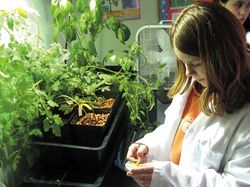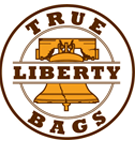
At home or in the classroom, hydroponic gardening projects provide an exciting way to teach children some basic scientific principles and plant growing techniques. There are so many ways to design a hydroponic gardening project, and the kids will be amazed to learn that they can grow plants without soil. Everyone can benefit from learning how to grow food even when there’s no place to plant a traditional garden.
Basic Hydroponics
The possibilities are truly endless. All you need is a few implements, water and nutrients to grow perfectly edible food. People from every nation and culture are using hydroponics to grow plants in living rooms, classrooms, greenhouses and even on rooftops. Hydroponic gardening projects allow children to experiment with various combinations of light, nutrients, temperature and growing mediums.
The development of growing techniques has been progressing for thousands of years. There’s an extraordinary amount of information available to parents, teachers and students. The Internet is ideal for gathering information about hydroponic growing techniques, systems and products. Classroom hydroponic gardening projects have even been turned into profitable businesses.
Hydroponic Projects
Believe it or not, all you need to start growing plants indoors is a large plastic soda bottle. Just cut the top of the bottle off about a third of the way down. Then turn the top portion of the bottle upside down and set it inside the bottom part of the soda bottle. To grow plants you’ll need to fill the bottom, or reservoir, of the soda bottle with a nutrient dense solution to water and feed whatever plant you decide to grow. The level of the nutrient solution should reach the narrow opening of the upside down portion of the bottle.
Finally, fill the inside of the bottle top with a growing medium and design a wick, such as a strip of cloth, to keep the growing medium moist. The plant roots will draw the solution from the moist hydroponic medium. You can use anything from shredded cardboard or newspaper to commercial products to serve as a growing medium. It won’t take your young hydroponic farmers long to realize that it’s the nutrients that allow a plant to flourish.
Although nutrient concentrates can be obtained from a local hydroponic gardening store, students will be thrilled to learn that they can experiment with unexpected additives such as milk, soda and coffee. They can also learn how to measure the pH level of the water and how to adjust the pH level to between five and seven when necessary. Adding oxygen and experimenting with different amounts of light can help students learn the principles of plant biology. You can grow everything from herbs to tomatoes. All it takes is a little research and borrowing a few essential items from home.





















 © 2017
© 2017
Recent Reviews